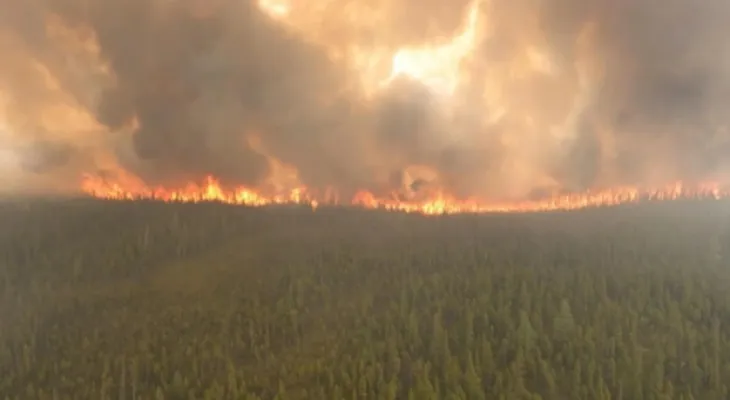Search here
Newspaper
Search here

Arab Canada News
News

Published: August 4, 2023
The total carbon emissions from wildfires in Canada from the first day of this year until July 31 have reached 290 megatons (a megaton equals one million tons), which is more than double the previous annual record set in 2014, according to data released today by the European Union's Copernicus program.
It is worth noting that emissions from wildfires in Canada amounted to 138 megatons during the entire year of 2014.
Copernicus used satellite observations of fire intensity and active fire temperatures to estimate emissions of various pollutants that make up the smoke.
This year, the first major wildfires broke out in Canada's forests in early May in Alberta province in the west of the country.
Starting from late that same month, wildfires began to ignite in the Northwest Territories and British Columbia. The latter overlooks the Pacific Ocean.
Later, high daily total emissions were also recorded to the east of these areas, in the provinces of Ontario and Quebec and in the Atlantic province of Nova Scotia.
In July, the fires continued to consume forests across Canada, affecting almost all provinces in addition to the three territories.
By the end of the mentioned month, fires had burned more than 120,000 square kilometers of forests in Canada, which is about 70% more than the annual record of burned area recorded in 1995. That entire year, the fires consumed 71,060 square kilometers of Canadian forests.
Copernicus reported that hot and dry weather created conditions conducive to record wildfires in Canada this year. Additionally, climate changes enhance the likelihood of such conditions and increase the risks of a longer fire season.
The European program added that the El Niño climate phenomenon may have also contributed to the proliferation and increased size of these fires, particularly in northern Canada.
Moreover, surface air temperatures in the Arctic region are rising faster than the global average, which could increase the flammability of its forests and lead to increased fire activity.
Comments